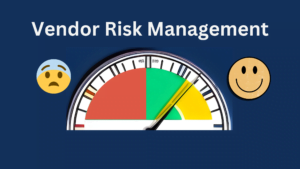In the digital era, IT security and compliance are indispensable terms often used interchangeably. However, they possess distinct meanings and objectives. These two vital aspects of any organization work collaboratively to safeguard sensitive data and ensure adherence to regulations. Security focuses on shielding an organization’s assets and information from cyber threats, while compliance involves conforming to laws, regulations, and industry standards.
Although security and compliance are intertwined, they serve distinct purposes and necessitate different approaches. This ensures that an organization is shielded from potential threats and maintains a favorable standing with regulatory entities. This article delves into the disparities between security and compliance, while also examining how organizations can effectively attain both to protect their digital assets and uphold regulatory compliance.
What is Security?
IT Security refers to the protection of systems, networks, applications, and data from unauthorized access, misuse, or damage. It involves implementing measures and controls to ensure confidentiality, integrity, and availability of information.
IT cybersecurity encompasses a diverse array of methods and technologies aimed at safeguarding systems and data against cyber threats. These threats include malware, ransomware, phishing attacks, social engineering, and various other types of cyberattacks. Cybersecurity professionals employ a wide range of tools and techniques to identify vulnerabilities and risks within IT systems, as well as implement controls and procedures to mitigate those risks.
Ensuring adequate IT security is imperative for any organization seeking to safeguard its digital assets and sensitive information. With the proliferation of increasingly sophisticated and frequent cyber threats, organizations must adopt a proactive stance in protecting their systems and data. By implementing robust measures in IT cybersecurity, organizations can fortify their digital assets and sensitive information, diminish the risk of cyberattacks, and uphold the trust of their customers and stakeholders.
What is Compliance?
Compliance refers to adhering to laws, regulations, industry standards, and internal policies. It involves following specific guidelines and requirements set by governing bodies or organizations to ensure legal and ethical practices.
Compliance is not a discretionary choice but rather a legal obligation that organizations must fulfill to avoid penalties, legal repercussions, and damage to their reputation. Governing bodies such as government agencies or industry associations establish compliance requirements, and failure to adhere to them can lead to severe consequences, including financial fines and loss of business. While certain compliance frameworks are mandatory, others serve as guidelines to uphold industry best practices.
For instance, the Service Organization Control Type 2 (SOC 2) framework is an optional framework that businesses can adopt to obtain guidance on securely managing data. On the other hand, the Health Insurance Portability and Accountability Act (HIPAA) is a compliance framework that healthcare companies are obligated to follow.
Security vs Compliance
Security and compliance are two distinct concepts but are closely related in the context of information technology and data management. Here’s how they differ:
- Focus
Security: Security focuses on safeguarding information and technology assets from threats and vulnerabilities. It includes measures such as firewalls, encryption, access controls, authentication, intrusion detection systems, and incident response.
Compliance: Compliance focuses on meeting legal and regulatory requirements specific to an industry or jurisdiction. These requirements could involve data privacy, data protection, record retention, reporting, auditing, and specific industry standards like HIPAA (Health Insurance Portability and Accountability Act) or GDPR (General Data Protection Regulation).
- Objective
Security: The primary objective of security is to protect the confidentiality, integrity, and availability of information assets. It aims to prevent unauthorized access, data breaches, data loss, and other security incidents.
Compliance: The primary objective of compliance is to ensure that an organization follows applicable laws, regulations, and industry standards. Compliance helps mitigate legal risks, avoid penalties, maintain trust with customers, and demonstrate adherence to best practices.
- Scope
Security: Security measures are broader in scope and cover various aspects of information technology, including network security, application security, data security, physical security, and personnel security.
Compliance: Compliance requirements are specific and depend on the industry, jurisdiction, and applicable regulations. It includes aspects such as privacy protection, data handling, reporting and disclosure, financial practices, and industry-specific regulations.
- Approach
Security: Security is proactive and preventive in nature. It involves risk assessments, vulnerability scanning, security controls implementation, security monitoring, and incident response planning to minimize the likelihood and impact of security breaches.
Compliance: Compliance is more reactive and focuses on meeting specific requirements set by governing bodies. It involves establishing policies, procedures, and documentation, conducting audits, and demonstrating adherence to applicable regulations and standards.
Conclusion
While security and compliance have different focuses and objectives, they often intersect. Implementing robust security measures helps organizations achieve compliance by protecting sensitive data and meeting regulatory requirements. Compliance, on the other hand, provides guidelines and standards that organizations can follow to enhance their security practices.












